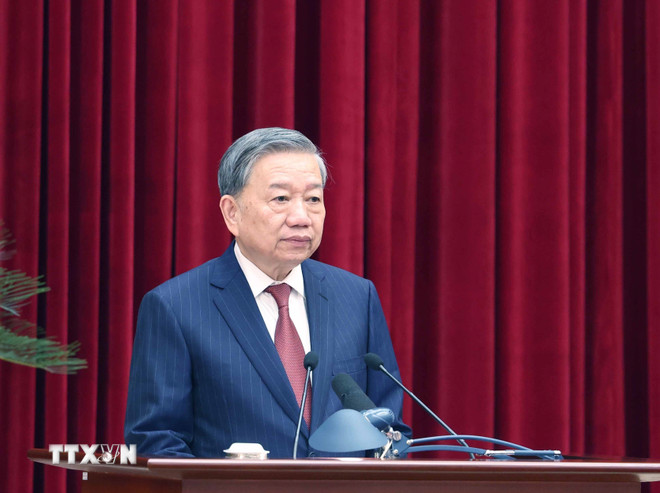HCMC – The Central Committee of the Communist Party of Vietnam has endorsed a sweeping restructuring of the country’s administrative system, reducing local government to two tiers —provincial and communal, and slashing the number of provincial-level administrative units from 63 to 34 to boost efficiency, according to a resolution announced Saturday.
Speaking at the end of the three-day 11th plenum of the Party Central Committee in Hanoi today, April 12, Party General Secretary To Lam described the plenum as historic because it discussed and decided on the issues that hold great importance to the nation’s development in the next century.
The reform will consolidate Vietnam’s administrative map to 28 provinces and six centrally-governed cities. Administrative districts will be phased out following amendments to the 2013 Constitution and the 2025 Local Government Organization Law, expected to be finalized by June 30, 2025, and effective from July 1, 2025.
Communal units—villages, wards and special zones—will be reduced by 60-70% nationwide, streamlining grassroots governance.
Under the new framework, provinces will serve as both implementers of central policies and policymakers for their jurisdictions, directly overseeing communal units. Communes will focus on executing national and provincial directives.
The overhaul extends to the political system. Party organizations will align with the new two-tier structure, dissolving district-level Party committees in line with Party statutes.
The Party Central Committee also approved streamlining the Vietnam Fatherland Front, political-social organizations, and state-assigned mass organizations at central, provincial, and communal levels. Trade unions for civil servants and armed forces will cease operations, and union fees for public sector workers will be reduced.
Judicial reforms accompany the restructuring, with the People’s Courts and Procuracies transitioning to a three-tier system: supreme, provincial, and regional. High-level and district courts and procuracies will be dissolved, though military courts and procuracies remain unchanged.
The Party Central Committee emphasized completing legal amendments by mid-2025 to ensure a smooth transition, urging the National Assembly, Government, and agencies to synchronize efforts. The reforms aim to eliminate institutional bottlenecks, particularly in public investment, private sector growth, digital transformation, and innovation, while fostering a leaner, more effective administration.
Officials are tasked with bold reforms to create a transparent, low-cost business environment, positioning Vietnam as a regional leader in administrative efficiency and startup innovation. “This is a revolution in organizational restructuring,” Party General Secretary To Lam said, adding this would unlock resources, empower local governments, and drive national development.
The Government is expected to finalize detailed plans in the coming months, ensuring no disruptions during the transition. By addressing longstanding barriers, Vietnam seeks to enhance its global competitiveness and lay a foundation for sustainable growth.









